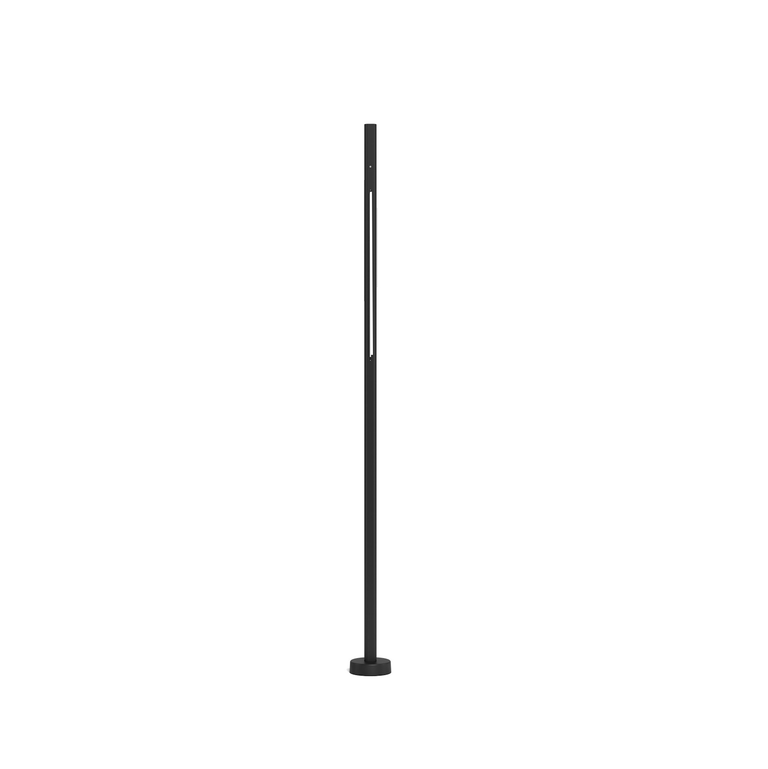8 Hamilton Landing
Novato, CA
Design Partners
siTe Landscape Architecture
Contractor
TechCon
Landscape Forms Elements
Typology Stick lights, Loll Designs Lollygagger lounge chairs
Photography
Andrea Gaffney Photography
Built in the 1930s, Hamilton Field was originally an Air Force bombardment base. Decommissioned and vacated in 1975, The Landing has given new life to the site with businesses occupying the renovated hangars and a shared space for tenant and public use. Known as 8 Hamilton Landing, the one-acre public space is on a site originally intended to house a hangar that was never built.
Jackson Derler and Matt Aranda of siTe Landscape Architecture, the landscape design division of contractor TechCon, saw opportunity to provide amenities for the tenants and Novato community in what they discovered was an active part of the city. Early in the project, they were onsite and noticed a lot of people walking through the site. They discovered The Landing is adjacent to a bay walk that is part of the larger San Francisco Bay Trail. They realized the plaza could be more than a walk-through and offer a place for people to stop and relax.
Today, the space has a dog park, bocce ball and lawn sport courts, lounge seating, picnic area, and a corporate break area with shade structures and conference spaces for tenant meetings.
“We wanted to create a balance between public use and the private tenant use to provide open space where the two could commingle.”
With safety, egress, and evening events in mind, lighting became an important element for the shared space. Derler and Aranda were immediately drawn to Typology Stick lights for an aesthetic that offered interesting ties to the history of The Landing. “We played off the historic significance of the space by placing the lights along the central walkway that became analogous to a runway, but instead of beacons guiding planes to the runway, 10-foot-tall Typology stick lights serve as beacons to guide people into the space. The lights have a contemporary take on the classic jet age design with their curved corners and vertical emission of light,” says Aranda.
“Loll Designs Lollygagger lounge chairs introduce a playful element to the space and provide nice pops of color,” says Derler. “There isn’t a lot of color on the property now, and we didn’t incorporate flowering plants into our landscape, so Loll adds visual interest and breaks up a large space with small seating areas.”
Aranda has been to the site on weekdays and weekends. On weekdays, people are casually eating lunch and the dog park is active. And on the weekends, the space is crowded with people accessing the bay trail, playing games, and relaxing on the lounge chairs and lawn. “We’ve made it inviting for people to stop here and hang out,” he says.
Related Products
Articles
Breaking away from traditional lighting vernacular was a central topic of discussion when Landscape Forms designers and engineers began working with their counterparts at Designworks, a BMW Group company, to create the Typology Collection.
The Typology Collection: Telling a Story of Sky & Earth, Light & Shadow
Through these two guiding visions and through the profound level of design, engineering and manufacturing expertise that both Landscape Forms and Designworks share, the Typology Collection challenges preconceptions about site furnishing and lighting, creating installations that provide functional value yet also surprise, delight and enhance the landscape even when not in use.
The Typology Collection: The Art & Science of Designing Uniquely Immersive Outdoor Experiences
The goal of this course is for you to acquire a better understanding of how our ever evolving urban spaces need more opportunities for humans to connect, interact, and live. We will focus on how the city of Denver – pioneers of the urban pedestrian mall concept – have reimagined the 16th Street Mall and the approach to lighting the space to better address the needs of the human inhabitants using the space.
Urban Lighting & Space Design
The goal of this course is for you to acquire a better understanding of how our ever evolving urban spaces need more opportunities for humans to connect, interact, and live.
CEU: Urban Lighting & Space Design
